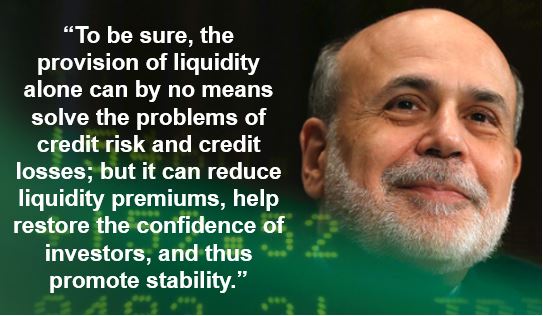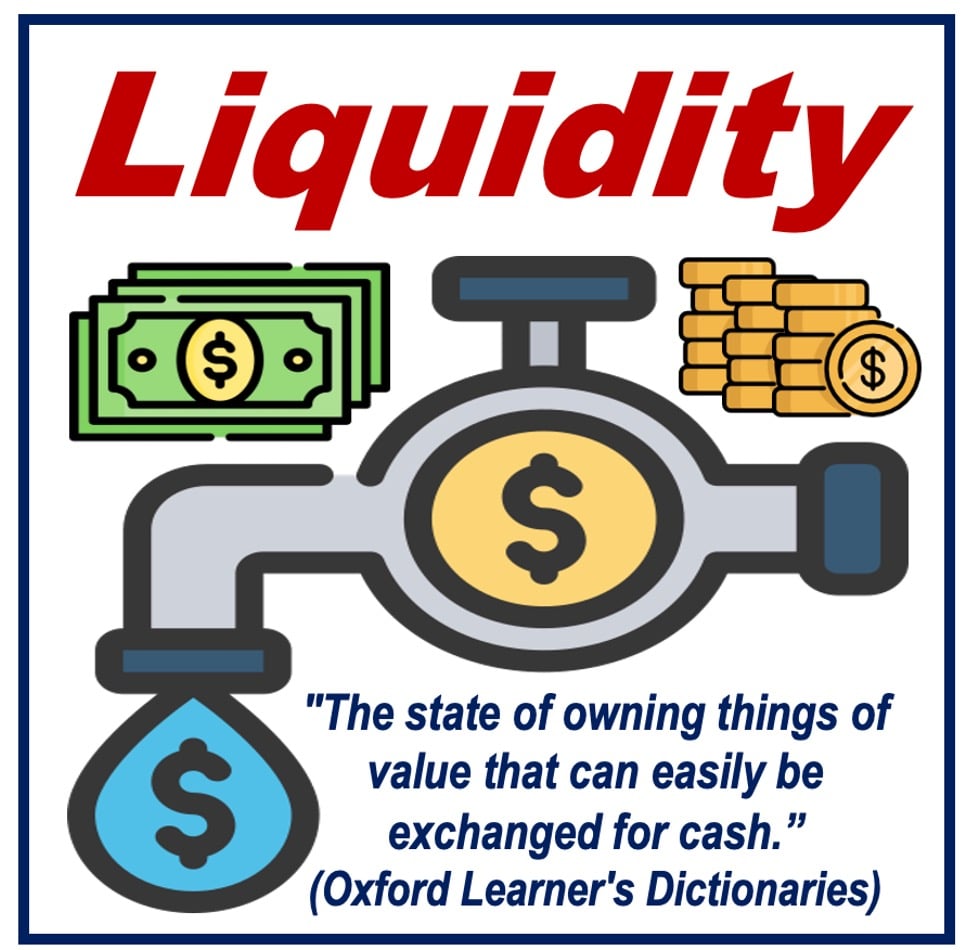Liquidity refers to how easily and rapidly an asset can be spent if so desired. It is a measure of the extent to which a person, organization, or entity has cash to meet short-term and immediate obligations. In accounting, it is the ability of current assets to pay for current liabilities. The most liquid asset of all is cash because it can be ‘sold’ for goods and services straightaway without any loss of value.
In the world of markets, liquidity refers to a commodity or stock and the extent to which there are enough buyers and vendors to ensure that a few buy-sell orders will not affect prices very much. Investment strategies often prioritize liquidity to ensure assets can be quickly adjusted in response to market changes or investment opportunities. Some markets are more liquid than others.
Ease of transactions
Liquidity is also a measure of how easily transactions can be performed in a particular instrument or security. For example, a sovereign bond or a share in a blue-chip company (large, listed firm) is easy to price and can be traded without a significant impact on that price.
If there is a major price change when you try to buy or sell an instrument – if it is even possible to transact – it is illiquid.
An analogy could be the difference between water and ice – imagine that liquid drinking the water represents your ability to instantly buy things. When water is in liquid form you can drink it immediately – it has high liquidity. When it is frozen into ice, you cannot drink it instantly – you have to wait until it melts.
Liquidity in markets
When a market is being traded regularly, liquidity is said to be high – it is liquid. This is because the volume of purchasers and vendors in that market create a free flow of trade, as there is always somebody around willing to buy or sell.
A seller can rapidly find a buyer in a liquid market without having to reduce the price of the asset in order to make it more appealing. The same applies to buyers – they do not have to pay extra to find the asset they want.
If there are very few buyers and sellers – trading is infrequent – the market is illiquid.
When there are lots of orders to buy and sell in the underlying market, there is greater probability that the highest price any purchaser is willing to pay, and the minimum price any seller is prepared to accept will move closer together – the spread will tighten.
We derive our price from those in the underlying markets. Therefore a bid-offer spread in a market with high liquidity will generally translate into lower spreads offered on the platform.
In the world of markets, Forex is the most liquid asset globally because of the high volume and frequency with which it is traded. There are usually very narrow bid-offer spreads for hard currencies such as US Dollar/Yen, British Pound/US Dollar, euro/British pound, euro/US dollar, and euro/Yen.

Breaking down liquidity
Economists use cash as the standard bearer of liquidity because it can be converted into other assets more rapidly than anything else.
Imagine you want to buy a $10,000 car. If you have that amount in cash, you can get the car immediately.
However, if you do not have cash but own a collection of valuable postage stamps that are probably worth more than $10,000, the car salesperson is unlikely to trade the car for your stamps.
You will have to sell your stamps first, and then use the cash to purchase the car. This is no problem if you are willing to wait – it is if you are in a hurry. You might have to sell your stamps at a discount. Rare stamps are an illiquid asset.
Liquidity in accounting and ratio definition
For an individual, company or any organization, liquidity in accounting is a measure of their ability to pay their bills and debts as they come due – on time. Liquidity measures their ability to access money when they need it.
In the example above, your stamps are illiquid, and would most likely not be worth their full value if you wanted a quick sale.
In the world of accounting, assessing liquidity means assessing financial obligations that come due within the next twelve months. You do this by comparing liquid assets with current liabilities.
The acid-test ratio, also known as the quick ratio or quick assets ratio, is an indicator of an entity’s liquidity.
Quick ratio is calculated using the following formula:
Quick ratio = (current assets – inventories) ÷ current liabilities
or
(cash and equivalents + marketable securities + accounts receivable) ÷ current liabilities
Accounts receivable refers to money that a company is owed by its customers.
Liquidity in banking
In the banking environment, liquidity is a prime concern. In the history of banking, a lack of liquidity has been one of the most common reasons for bank failures.
If a financial institution holds assets in a highly liquid form, it tends to reduce the income from those assets – cash pays no interest.
Consequently, banks always try to reduce liquid assets as much as they can. However, if they do not have sufficient liquidity to meet the demands of their depositors, they risk experiencing a bank run – crowds of people withdraw their money in a panic.
Most banks today try to forecast what their liquidity requirements will be and maintain emergency standby credit arrangements with other banks.
Liquidity buffers are critical for financial institutions, as they provide a cushion against market shocks and ensure stability during economic turbulence.
Since the global financial crisis of 2007/8, financial regulators across the world have become much stricter regarding banks’ liquidity levels.
The US Federal Reserve made the following comment on its website:
“Over time, banks have failed or required government assistance because they had inadequate capital, a lack of liquidity, or a combination of the two.”
“The Federal Reserve since the financial crisis has worked to increase the levels of both liquidity and capital at banking organizations.”

Liquidity vs. solvency
The two terms are quite different, even though they both refer to a business’ financial health.
While liquidity refers to an entity’s ability to pay its bills and settle debts on time, solvency looks at its long-term obligations.
A company may be very liquid but not solvent, or very solvent but not liquid. In order to function effectively in the market, firms need to be both.
In most cases, a highly solvent company with a liquidity (cash) problem can generally get hold of cash by borrowing it.
Derivatives of the root word “Liquid”
“Liquidity” is a derivative of the English root word “liquid.” Let’s have a look at some more derivatives of “liquid,” spanning different parts of speech (verbs, nouns, adjectives, and adverbs), complete with definitions and examples:
Liquidator (noun)
A person appointed to wind up the affairs of a company or firm.
Example: “The company was unable to pay its debts, and a liquidator was called in to sell off the assets.”
Liquidity (noun)
The availability of liquid assets to a market or company.
Example: “The firm’s liquidity was high, allowing it to meet all its short-term obligations.”
Liquefaction (noun)
The process of making or becoming liquid.
Example: “The liquefaction of gases is a process used in refrigeration and air conditioning.”
Liquefy (verb)
To make or become liquid.
Example: “The heat was so intense it caused the metal to liquefy.”
Liquidize (verb)
To turn into a liquid, especially in cooking or food preparation.
Example: “She used the blender to liquidize the fruits into a smoothie.”
Liquid (adjective)
In a state that flows freely, like water.
Example: “The liquid form of this medication is easier for patients to swallow.”
Illiquid (adjective)
Hard to convert to cash without losing value.
Example: “The rare art pieces were considered illiquid assets, difficult to sell quickly at market value.”
Liquid (Adjective)
Clear and shining, like water.
Example: “Her eyes were a liquid blue, clear and bright.”
Liquidly (adverb)
Done in a flowing manner.
Example: “The dancer moved liquidly to the rhythm of the music.”
Video explanation
